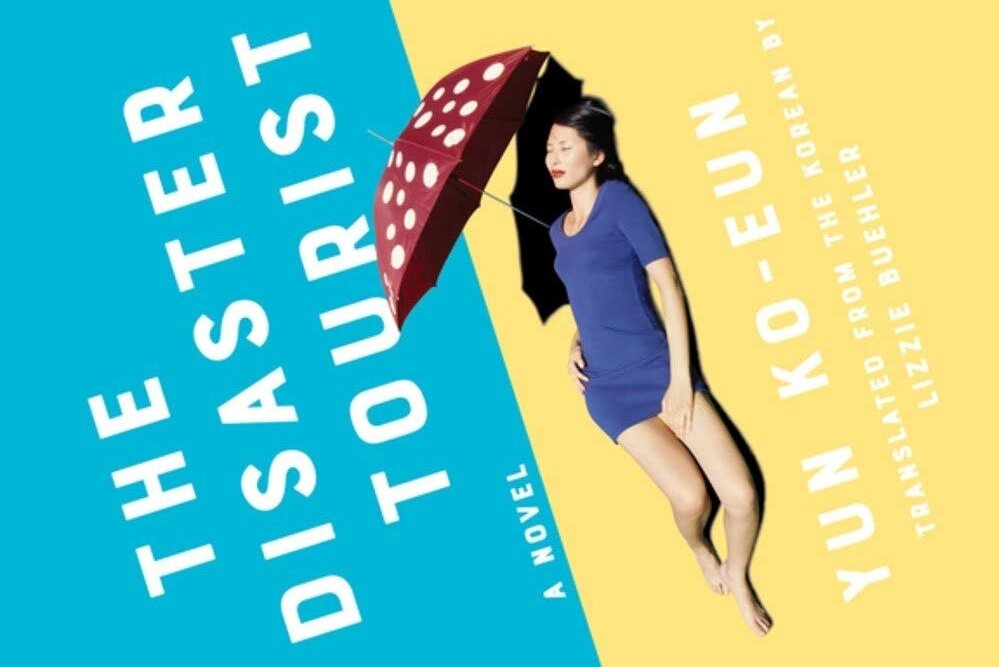A piece of digital theater about connecting with family at a distance prompts a reckoning with the guilt of emigration.
Read MoreRamsey Faragallah (left) and Yousof Sultani (right) in This Is Who I Am. Photo: PlayCo/Wooly Mammoth Theatre Company
review

Ramsey Faragallah (left) and Yousof Sultani (right) in This Is Who I Am. Photo: PlayCo/Wooly Mammoth Theatre Company
A piece of digital theater about connecting with family at a distance prompts a reckoning with the guilt of emigration.
Read More
The Disaster Tourist by Yun Ko-eun, translated to English by Lizzie Buehler. Counterpoint Press. 2020.
The Disaster Tourist, the first novel by award-winning Korean author Yun Ko-eun to be translated into English, explores the phenomenon of dark tourism and offers a wry critique on the moral shortcomings of a gluttonous travel industry.
Read More
Riz Ahmed as Ruben, a heavy-metal drummer who loses his hearing in Darius Marder’s Sound of Metal (2019).
If you ever wondered what a fit of rage feels and sounds like to someone who is deaf, ‘Sound of Metal’ gives you the tools to imagine, even inhabit, that reality for a brief amount of time.
Read More
Sope Dirisu as Bol in a still from His House (2020)
An understated, yet resoundingly impactful exploration of the overlap between the real-life horrors of a refugee’s journey and the metaphor-heavy horror genre, His House offers a multi-sensory manifestation of the ghosts that refugees carry with them.
Read More
Installation view of "New Movement." From left to right: Wendy Jacob, Three Minutes (red), 1993; Helen Singh-Miller, Grand Union, 2018; Helen Mirra, Round Way, 2019; Tramaine de Senna, Imagination Creation, 2019; Carmine Grimaldi and Deniz Tortum, If Only There Were Peace, 2017; Robert Moeller, andaonetwothree, 2019; Joseph Pomp, Manhattan Video, 2019-ongoing. Photo by Stewart Clements.
One of the watershed innovations of postmodern dance was the liberation of movement from its symbolic and narrative functions in choreography and performance. Freed also from the attendant expectation of having to be ‘ideal,’ the dancing body began giving shape to the invisible forces of its own production. Through their movements, dancers began tracing the formal limitations of scores, and started borrowing basic actions—like walking—from everyday life. In the process, this new movement opened up the art of dance to every kind of body. Movement became an ‘index’(1); a measure of something instead of an attempt at the thing itself, a way of knowing outside the limits of representation and mimesis.
“New Movement,” a group show curated by Helen Singh-Miller at The Cost Annex in Boston on June 7th 2019, explored ways in which contemporary art is building on this legacy of movement. The show featured the works of ten artists either living in or connected to the Boston area, showing movement in its collective, individual, appropriated, accepted, and even marginalized variations. Brought together through Singh-Miller’s perceptive curation, these works shed light on the power of movement to make us imagine, see, and embody the world otherwise.
http://bostonartreview.com/reviews/new-movement-helen-singh-miller-argyro-nicolaou-boston/
Read More